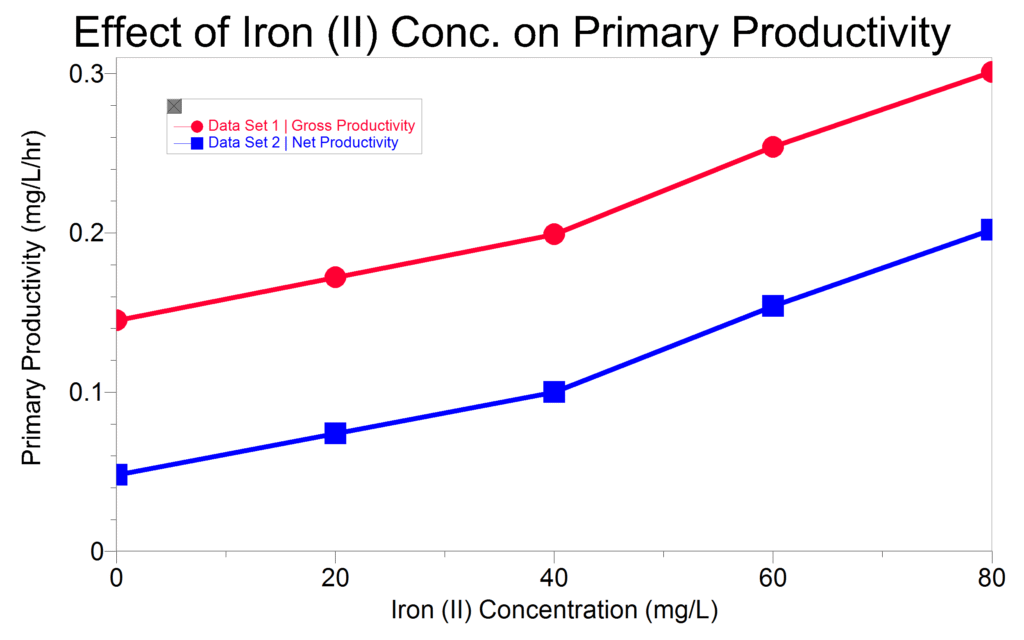In the late 1980s, Dr. John Martin made a prediction that iron was a factor limiting phytoplankton growth. He hypothesized that increasing the amount of available iron in the ocean would stimulate phytoplankton growth. This increase in primary productivity would result in a concomitant increase in carbon sequestration in the ocean, ultimately leading to a decrease in the amount of carbon dioxide in the atmosphere. This idea is commonly known as the iron hypothesis and has been experimentally tested in the field. In fact, seeding the ocean with iron has been suggested as one way of mitigating global climate change.
The Biology Department at Vernier has developed a simple way to demonstrate the iron hypothesis in the classroom. We started with Lab 17 in Investigating Biology through Inquiry, which measures primary productivity using our Primary Productivity Kit. Increasing concentrations of iron (ii) gluconate were added to samples of water containing algae (Chlorella). The samples were then exposed to a light source for 21 hours and then the amount of dissolved oxygen produced in each sample was measured using a Dissolved Oxygen Probe. Gross and net productivity were then calculated for each sample. As the data show, the primary productivity increased as the iron concentration increased.

This is an excellent activity for student inquiry. For example, students can investigate other limiting factors such as pH, light levels, different wavelengths of light, or even see what happens as the iron is used up by the algae. For background information and a recent article on the iron hypothesis, see the resources below.
Resources
- Hiscock et al. (2008). Photosynthetic maximum quantum yield increases are an essential component of the Southern Ocean phytoplankton response to iron. PNAS. 105(12), 4775-4780.
- Martin J.H., et al. (2004). Testing the iron hypothesis in ecosystems of the equatorial Pacific Ocean. Nature. 371, 123-129.
- Martin, J. (1990). Glacial-interglacial CO2 change: The Iron Hypothesis. Paleoceanography. 5(1), 1-13.
